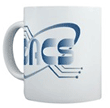| April 3, 2007 General Meeting Review |
| Windows Vista & MS Office Suite |
Our presenter of the evening, Jay Ferron, wasted no time in conveying his opinion of Microsoft’s Windows Vista when he said, “I would never want to go back to using XP now that I have been using Vista.” He then proceeded to detail why his assessment was so adamant. Vista comes in several versions, including Home Basic, Home Premium, Business, Enterprise (not available on the shelf), and Ultimate. All of these versions are actually available on the same CD; access to a version will be enabled according to what is purchased. Each of them is equipped with an upgraded Windows Defender (for detecting spyware) and Windows Firewall (now handling outbound protection). Jay cautioned against uninstalling Defender. “If you don’t want to use it, just disable it. Reinstalling it at some later time would not be a smooth process.” While IE7 can be installed on systems other than Vista, its maximum ability to positively impact Windows can be made when integrated with Vista. In Vista, IE7 runs in protected mode and has limited system access and can only go to the temp folder and cookie folder. Jay indicated that the new strategy of the miscreants is to attack Mozilla in Vista, “because they know it’s only a standard user and doesn’t run in protected mode so it provides an easier way to attack the system.” Vista improves the functionality of the administrator account and user accounts from two vantage points. It requires that certain roles deemed the province of the administrator be done at that level, such as installing programs. When administrative privileges are required it asks for confirmation or else the administrative account runs a plain user. At the same time it readily decentralizes authority to users the decisions that will enable them to be more productive, such as the installation of a font or printer. Users of Business, Enterprise, and Ultimate versions of Vista will likely welcome the Complete PC Backup and Restore feature. This image-based backup tool is capable of restoring your entire PC environment, including the operating system, installed programs, user settings, and data files. While Microsoft has postured 512MB as the minimum amount of system memory required, Jay recommended seeing 1GB as the base, adding, “You also need a good video card.” The audience uniformly seemed to enjoy taking in the Aero effect, following the mouse darting across the screen as it revealed the glass-like menu bars, Windows Flip 3D, and Live Thumbnails. Greater parental controls may be the most convincing feature for some users. Jay described how parameters could be set, including restricting visits to certain websites and specifying time periods of usage. Microsoft Office products received significant revisions as well. Jay pointed out that MS Word 2003 has 31 toolbars whereas the 2007 version has 7 ribbons making it easier to find the function a user is looking for. Outlook features now include an RSS reader, Task Center, and To Do bar. Readers will note that not all features are available in all versions of Vista. Microsoft provides Windows Vista: Compare Editions. Details of the features can be found in Windows Vista: Features Explained. |
Mugs and more, visit CafePress to order
